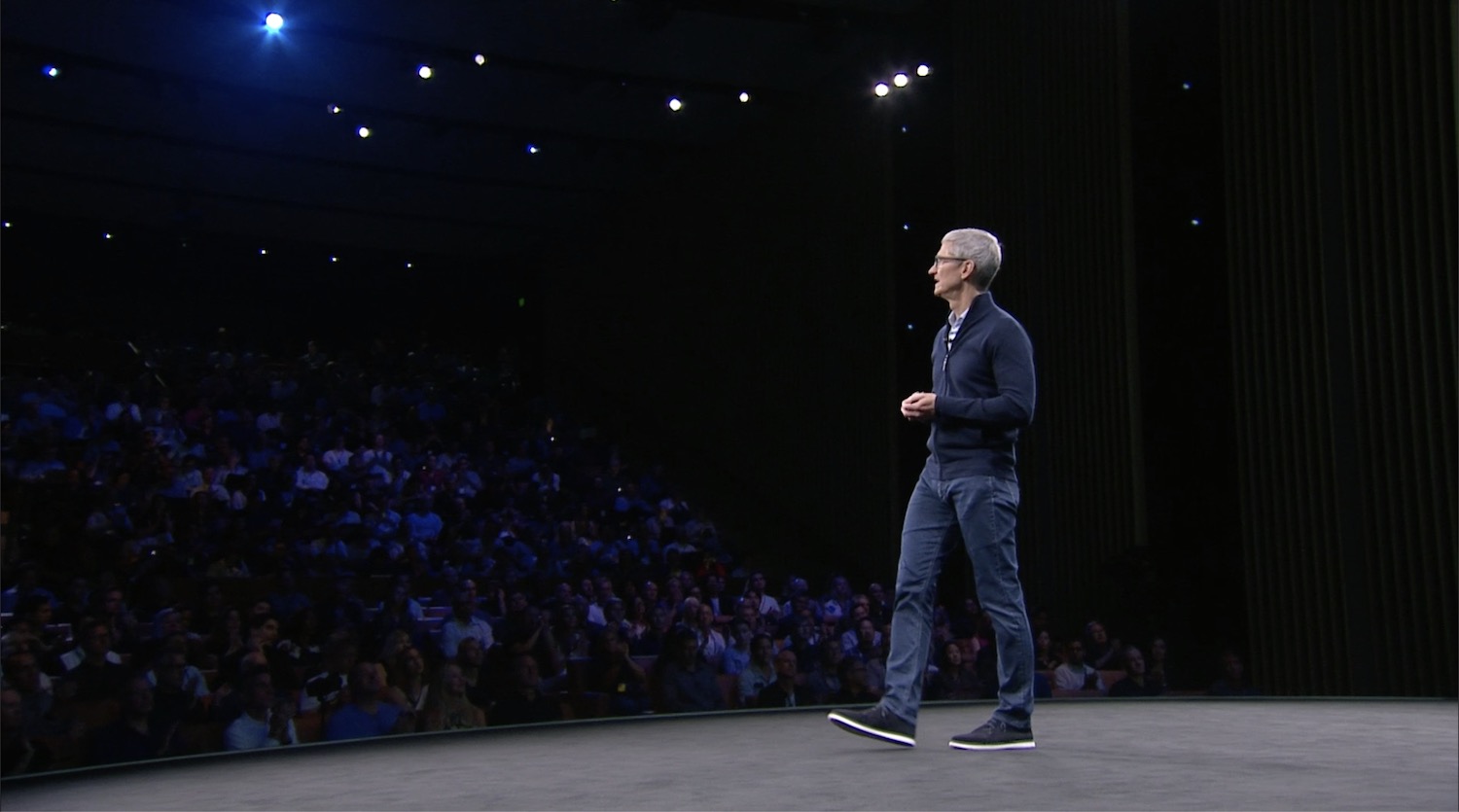
Today was Apple keynote day, with the lead item being the debut of the new iPhones, the iterative 8 and the future-facing iPhone X. The event, held for the first time in the new Steve Jobs Theater, played up its connection to Apple’s past, but as always, it’s the changes in the present that will help determine the futures for publishers. Here’s my quick read on what a few of today’s announcements could mean for those of us in the news business.
Note: The fall Apple keynote is always focused on hardware; the important software updates in iOS 11 and its Mac/Watch/TV equivalents came at this summer’s WWDC. My writeup of those changes, including some to Apple News, is here.Apple Watch: The Apple Watch has been effectively repositioned, from a broad-based wrist computing platform to a device designed for fitness and health, with everything else coming along for the ride. So there was no explicit mention of anything news-related in the keynote.
But the major product update here — the addition of a separate cellular connection to the watch — gets us a little bit closer to a future Apple’s been pushing towards. It hasn’t always been smooth, but the company is preparing for a vision of what comes after the iPhone.
Not after, really — we’ll be looking at our phones for a good long while now — but a world in which the phone is a little bit less the center of your digital universe. Compare it to the Jobs-era shift from the Mac as the “digital hub” of our lives — everything plugging in to one central device — to the next, more distributed, each-on-its-own generation that followed it. (Remember when you had to plug in your iPod to your iMac to download MP3s?)
What was once the job of the iPhone is now being distributed, bit by bit, to a constellation of smaller and more personal devices — the Apple Watch on your wrist, the AirPods in your ears, the AR glasses that everyone expects Apple to bring forth in the next few years. And over time, as those each become more powerful and more connected, they’ll make the smartphone a little less central.
So why does that matter to news publishers? It’s another paradigm shift that they don’t seem prepared for. If users’ mobile attention is decreasingly focused on a good-sized screen in their hand, how do news producers get their attention, serve them what they need, and find a way to monetize it?
Some of the people and companies that produce most of our news are still adapting to the World Wide Web, which is more than 20 years old. And more are still adapting (editorially, structurally, financially) to the shift to mobile devices. If today’s phone time gets increasingly spread among [always-connected watches | wireless earbuds whispering push notifications | voice-driven smart speakers | an AR layer on the world via glasses], how does the work of journalism reach audiences?
I’m sure there will be some good answers to that question, and it’s easy to overstate this change. But technology companies have, at some level, accepted that smartphones have become boring. You can get a perfectly good one cheap and most everyone you know has; the annual updates get a little more snooze-worthy each year; it’s clear they’re on the back half of the growth curve. They’re all busy trying to figure out what’s coming next. It’d be worth it for media companies to start thinking about doing the same.
iPhone: It was jarring to see an iPhone introduction fall as flat as the iPhone 8 and 8 Plus reveal did. On one hand, new iPhone! On the other, everyone knew the big show was still to come.
Then the iPhone X (pronounced like 10)…looked a little weird? Leaks had ruined nearly every surprise in the keynote, but I was surprised to see how odd its new odd shape — exaggerated rounded corners and that unusual camera notch — felt. We have decades of rectangular screens to forget — more than a century’s worth if you take it back to movie screens. And it was the demo’s landscape videos that looked the most out of place. It will be interesting to see if and how web designers, app developers, and videographers adjust their work to account for this small-but-significant visual shift.
That said, I have no doubt that, just like killing the headphone jack last year, it’s a change we’ll get used to. For journalists, the improvements to the camera (on both the 8 and the X) are probably the most welcome, and the new lighting modes will make your on-the-scene portraits a bit nicer. AirPower, the wireless charging pad coming next year, could save you a few Lighting cables on the road. And it’s faster, of course. But I’m not sure that it’s something most journalists will be rushing to spend $1,000 on.
Apple TV: It gets a bump to 4K, which will be nice for people with newer TVs. Apple’s doing more to localize content in other countries (I spotted a CBC logo on a slide), and — useful for networks — live news is being added to the main TV app. But Apple TV’s mostly been a dud for publishers and broadcasters, significantly more expensive than its rivals from Roku, Amazon, and Google. The new 4K model starts at $179, which I don’t think will change that equation. (I’m about as devoted an Apple user as you’ll find, but when we got a new TV this summer, it was easy to pick a cheap Roku or Amazon stick over Apple’s alternative. The new Amazon flagship Fire TV will cost half or a third of the price, add an always-on Alexa interface, and match the Apple TV on nearly all features.)